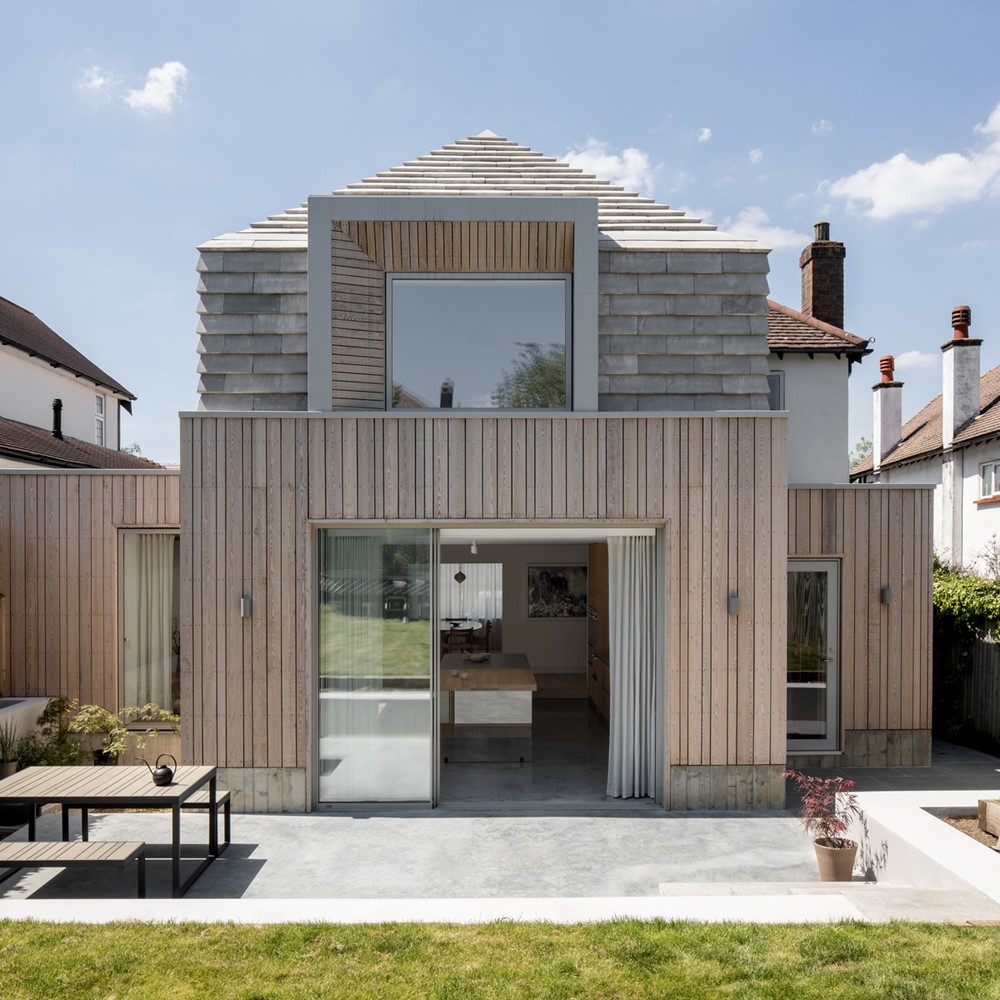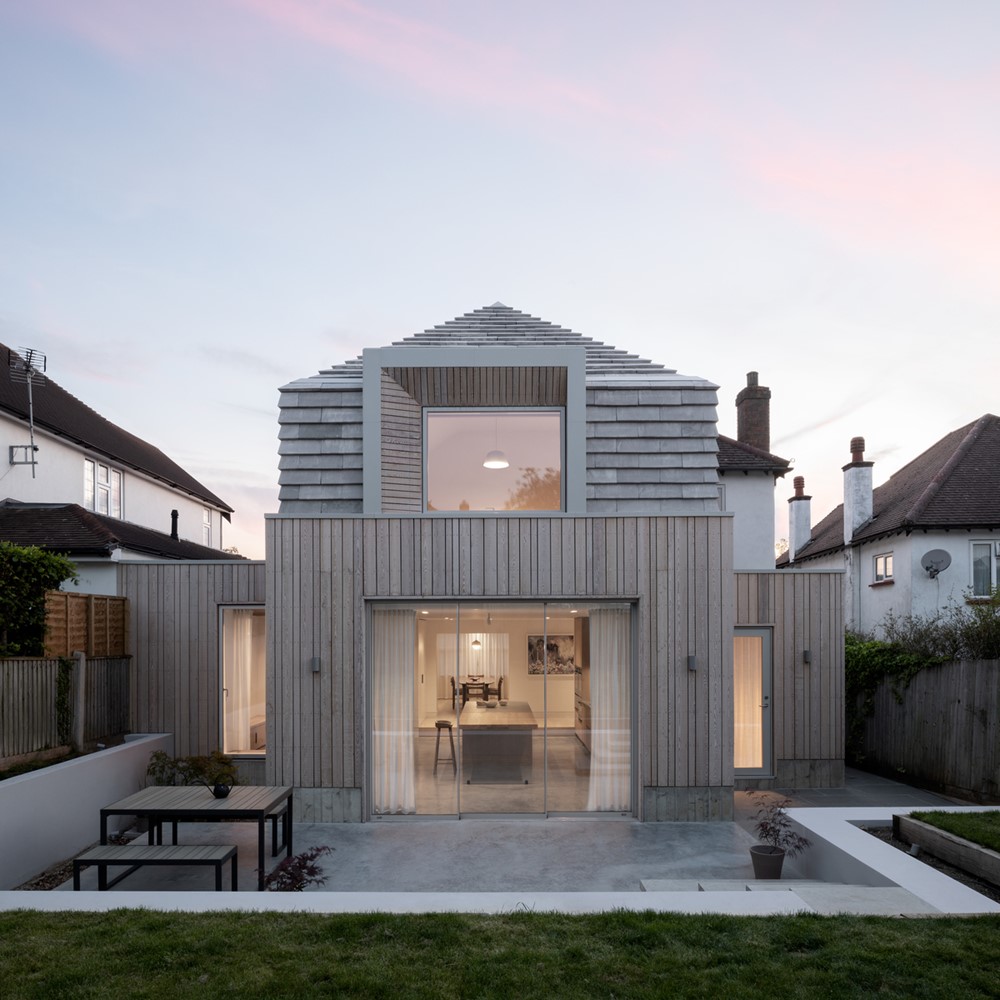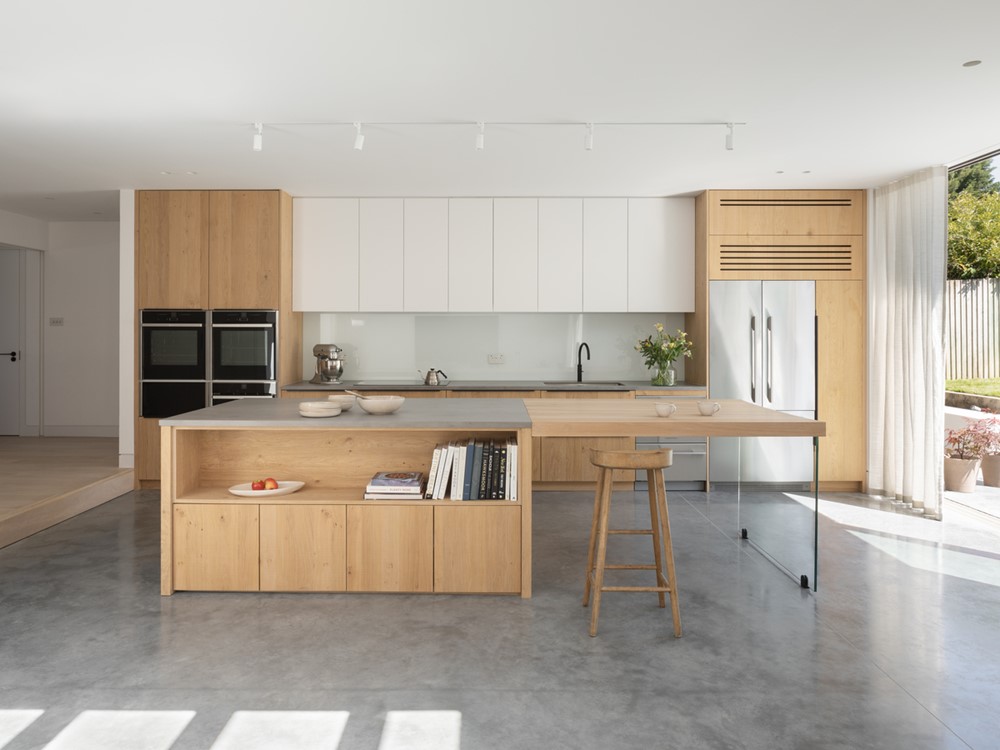Oliver Leech Architects has given a detached inter-war house in Epsom a new sense of identity through the addition of a hipped-roof two-storey rear extension that reveals a depth of clean, intricate detailing throughout. Photography by Ståle Eriksen.
.
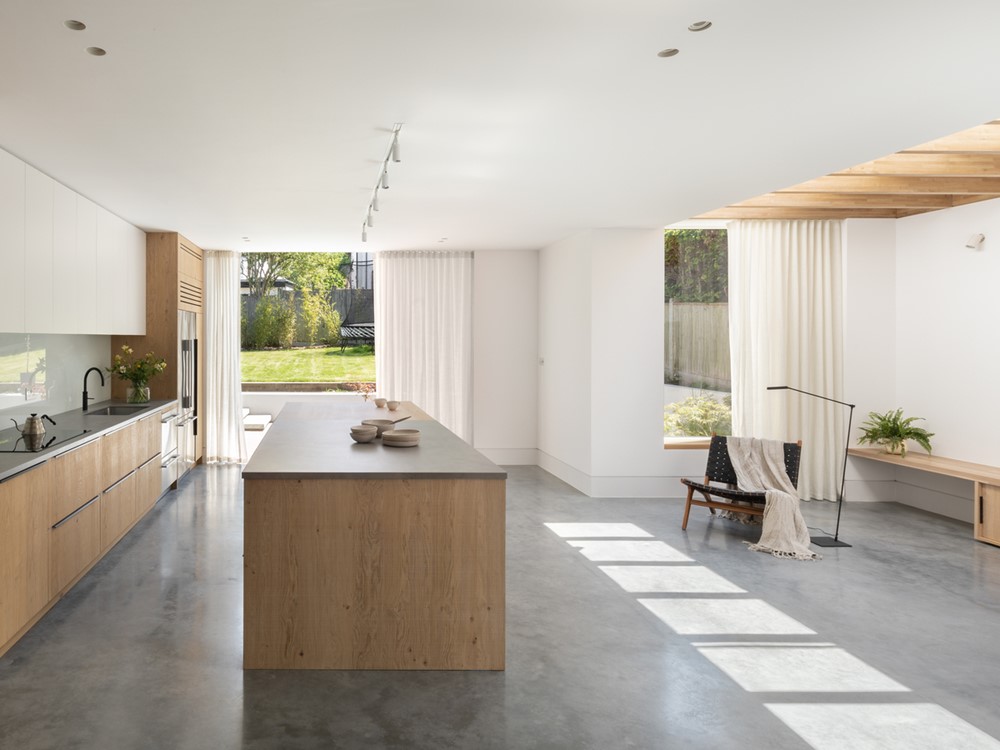
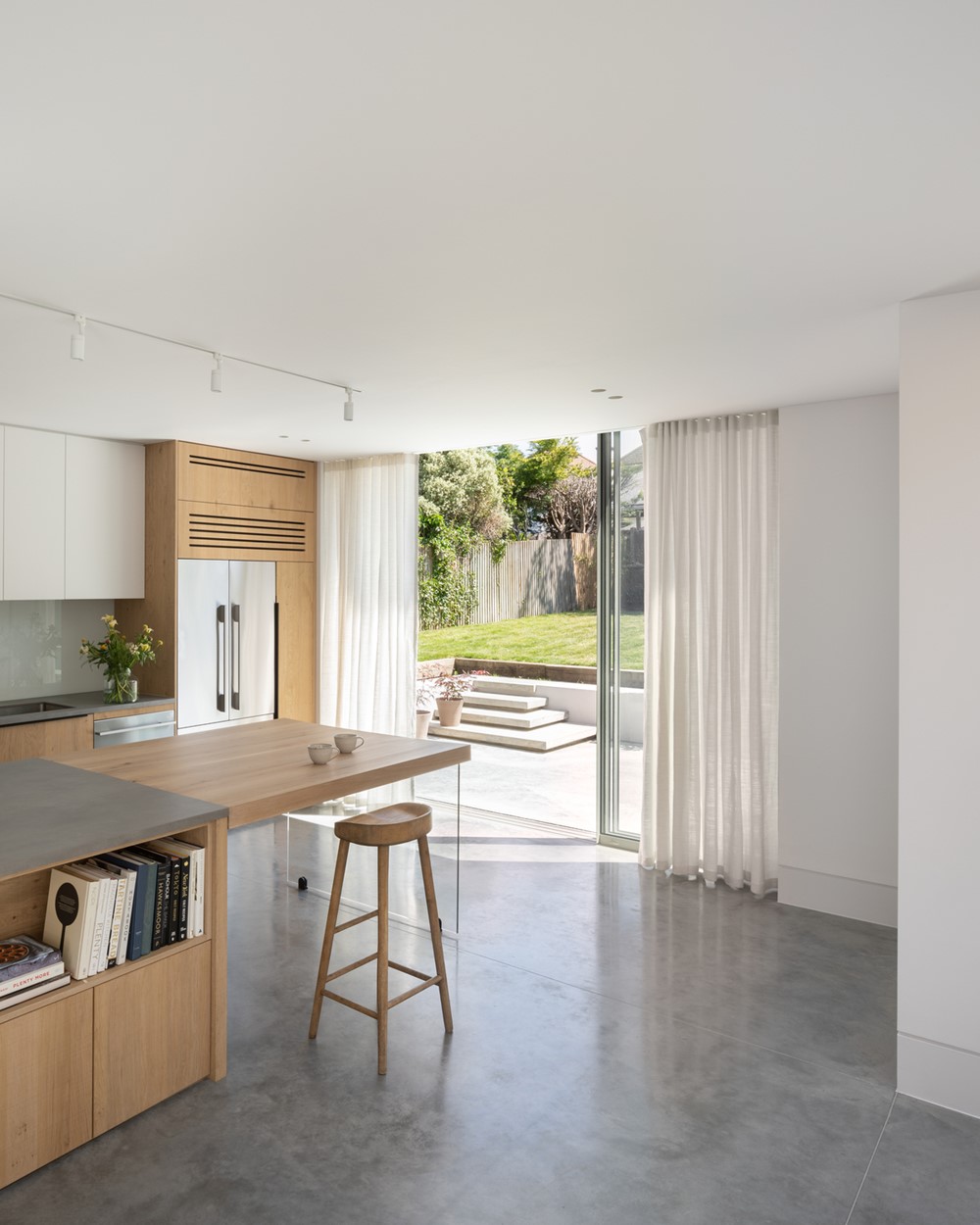
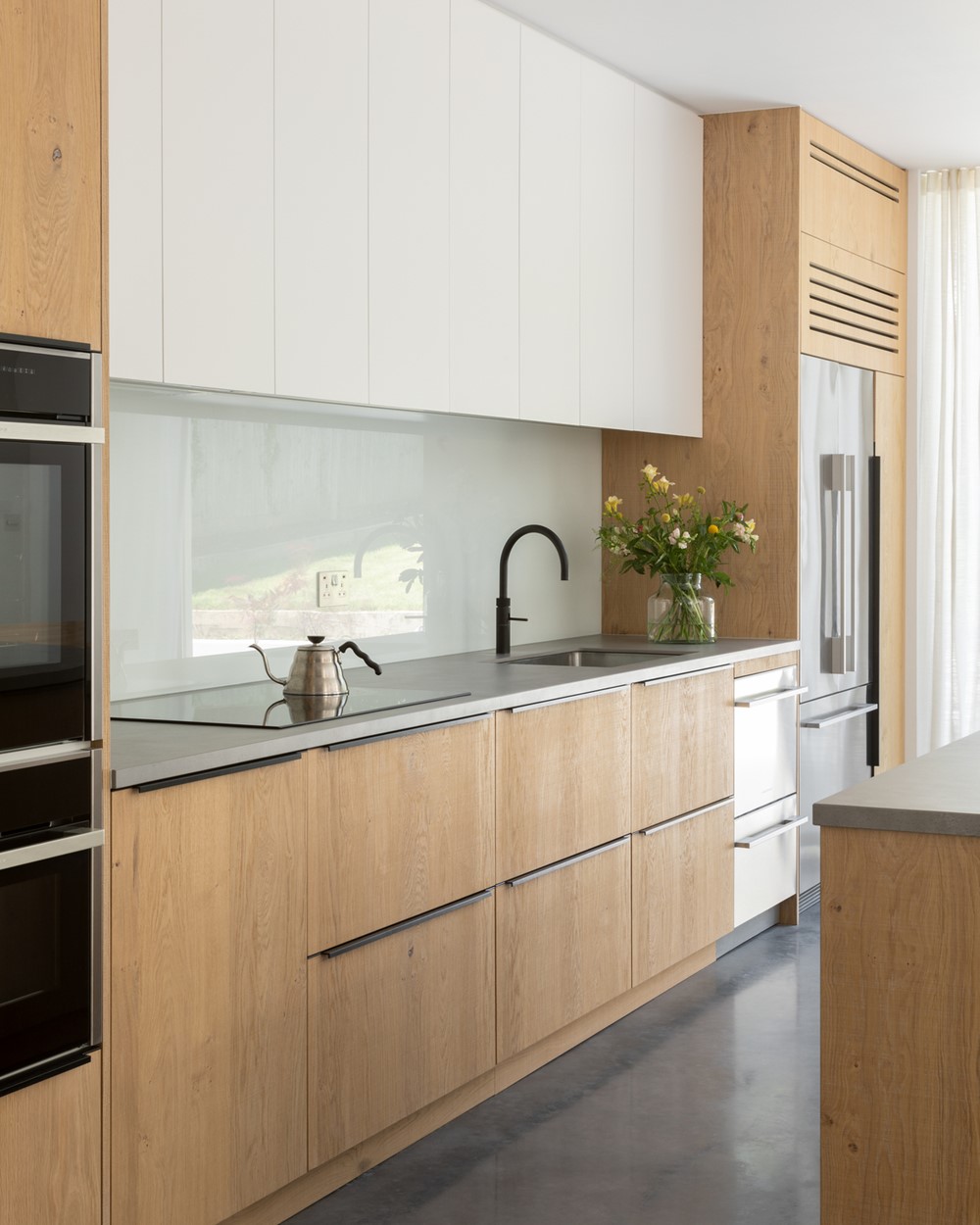
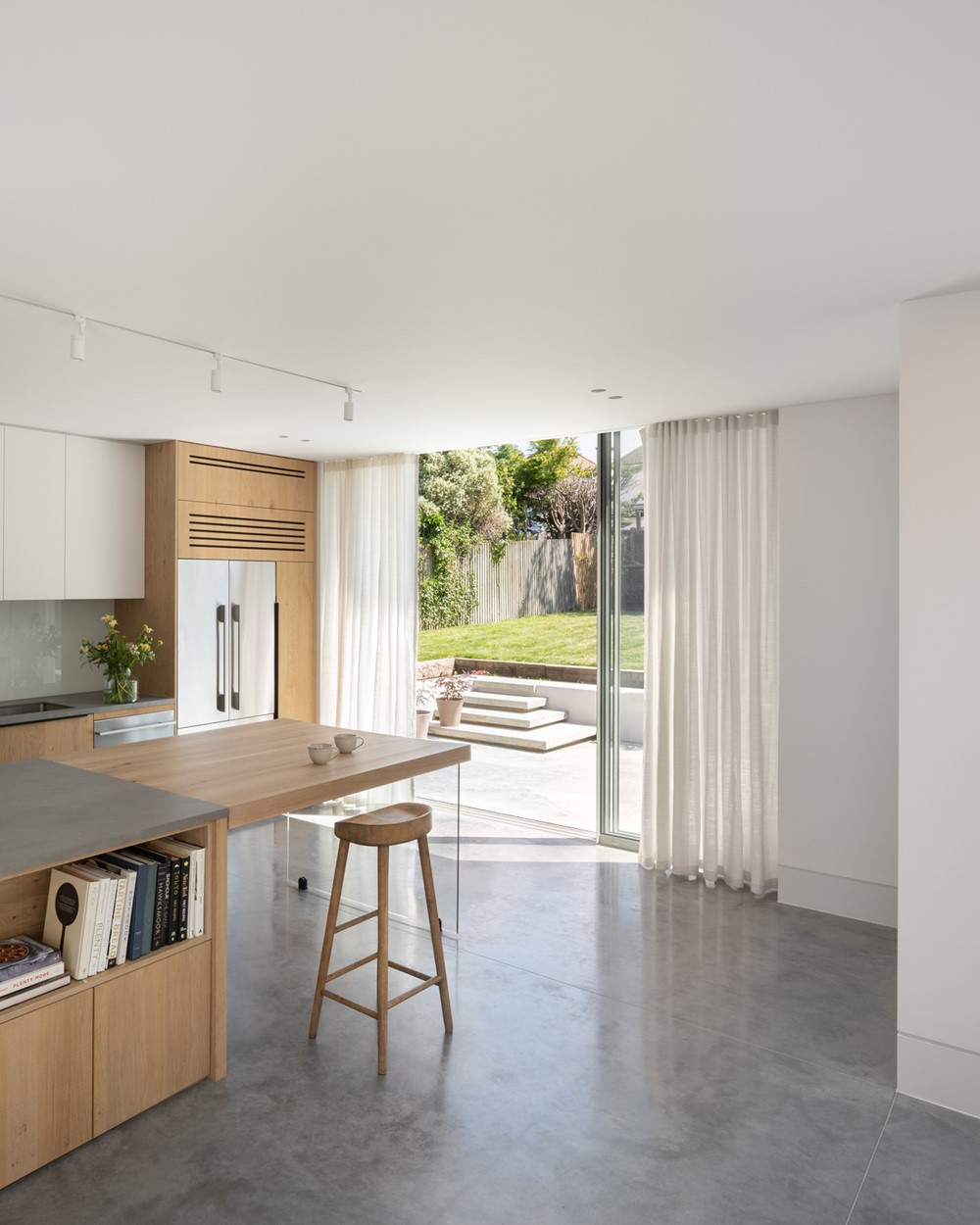
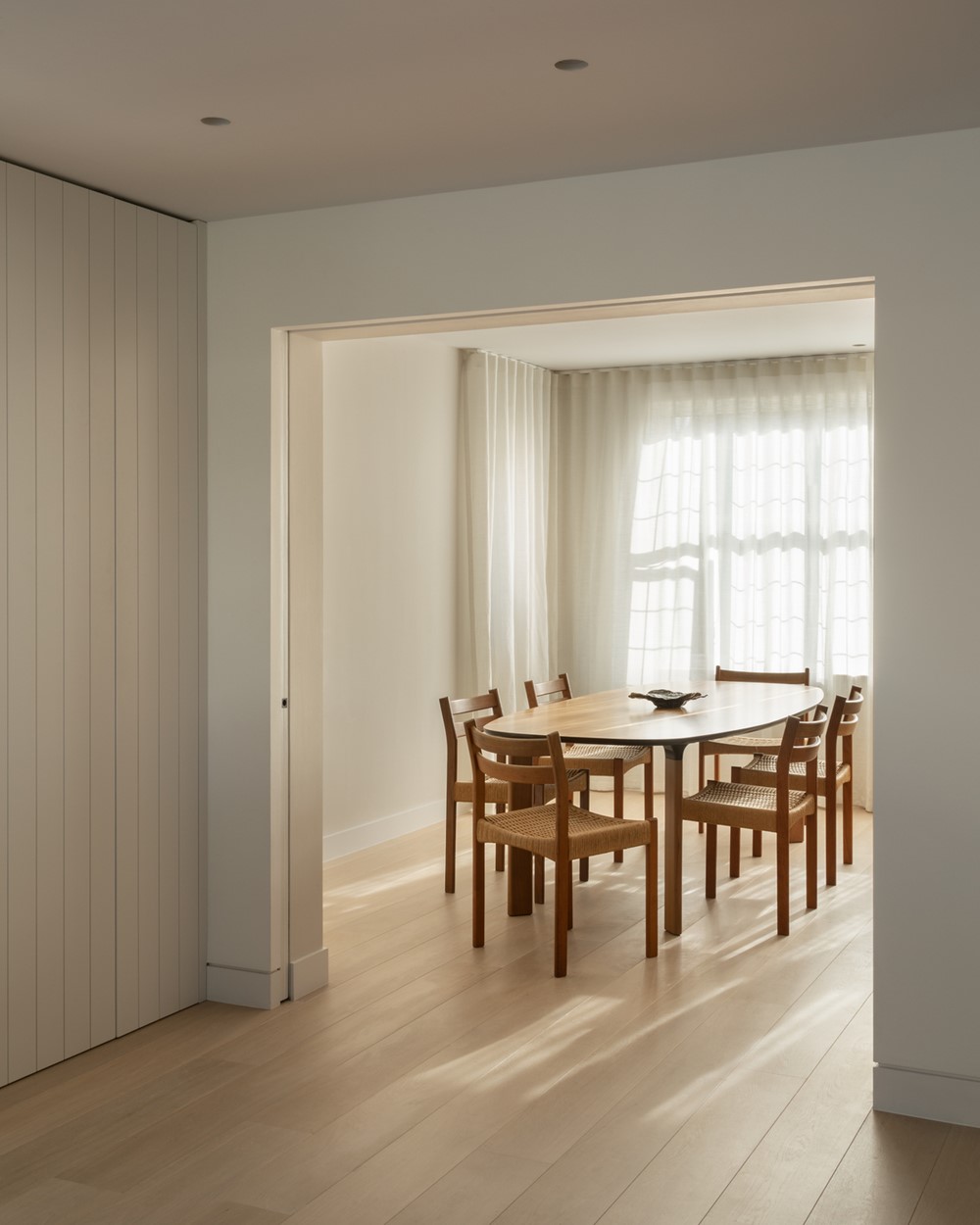
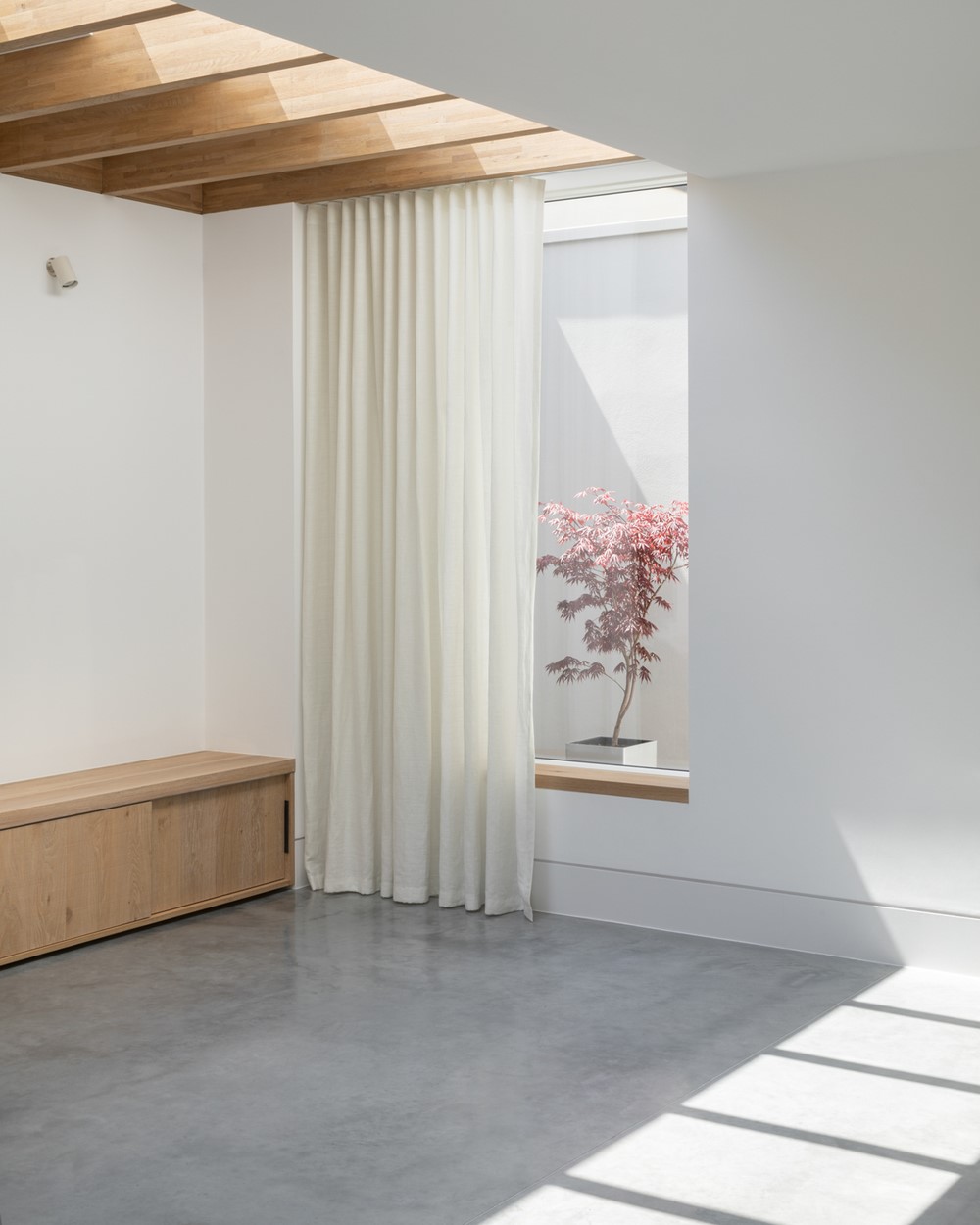
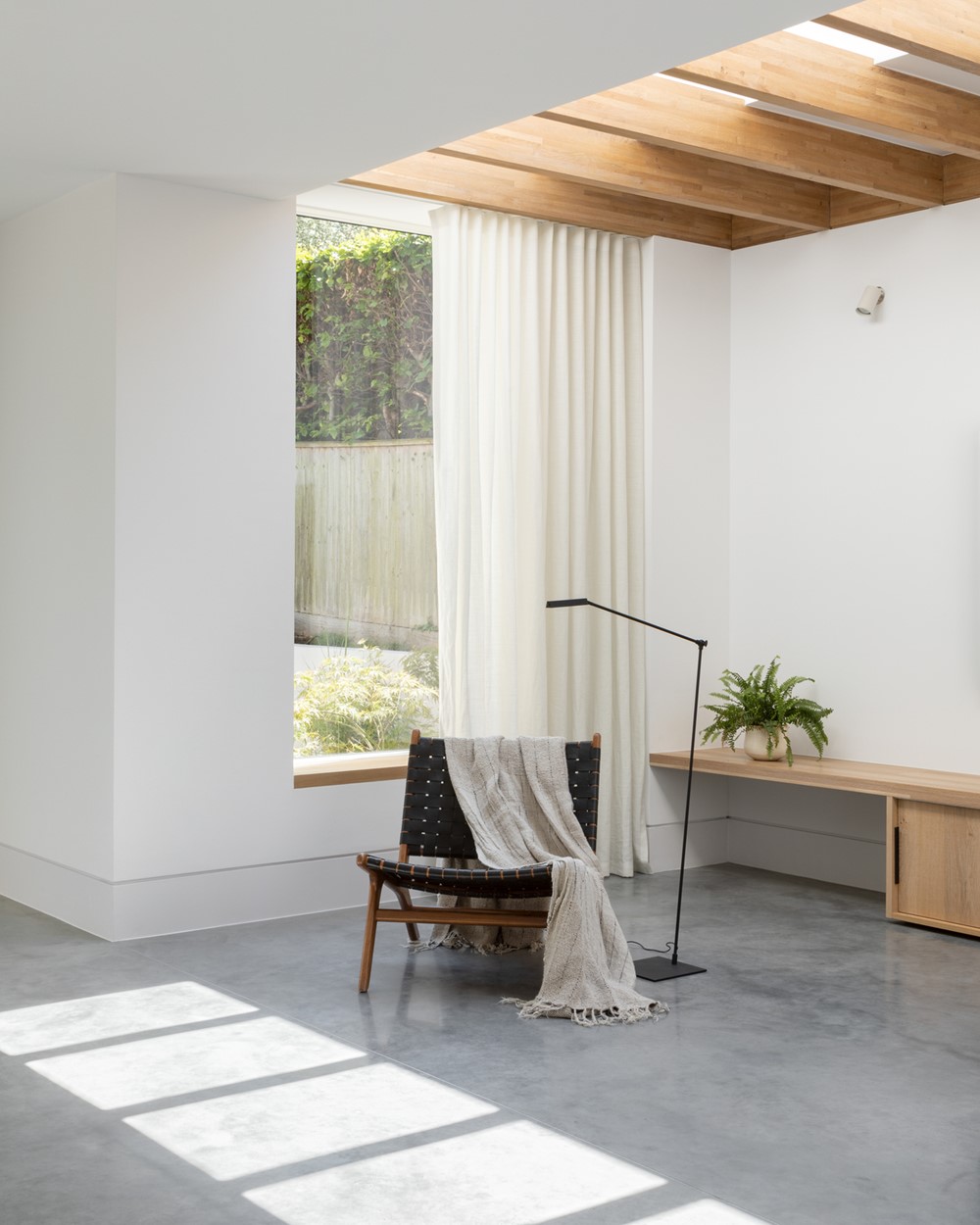
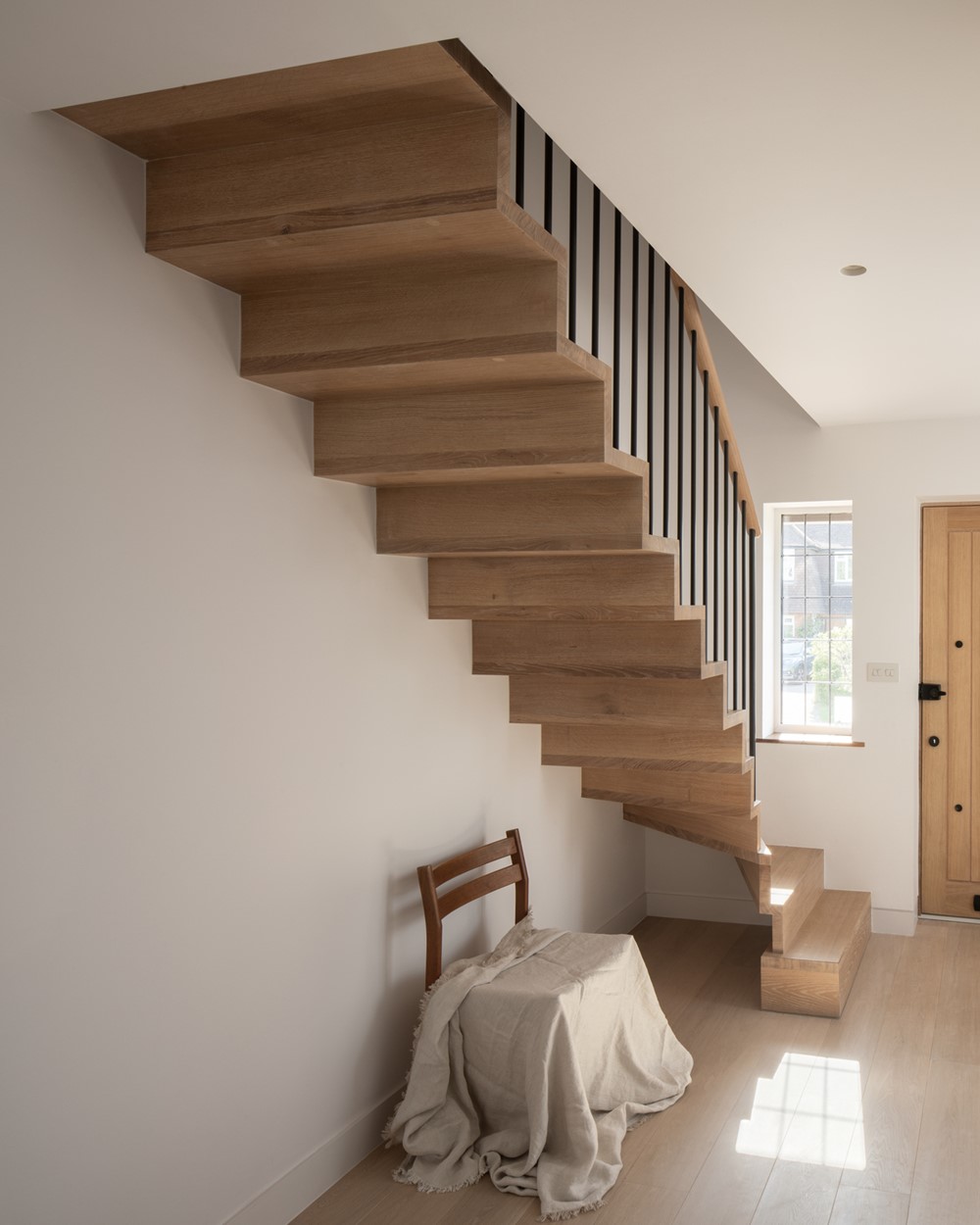
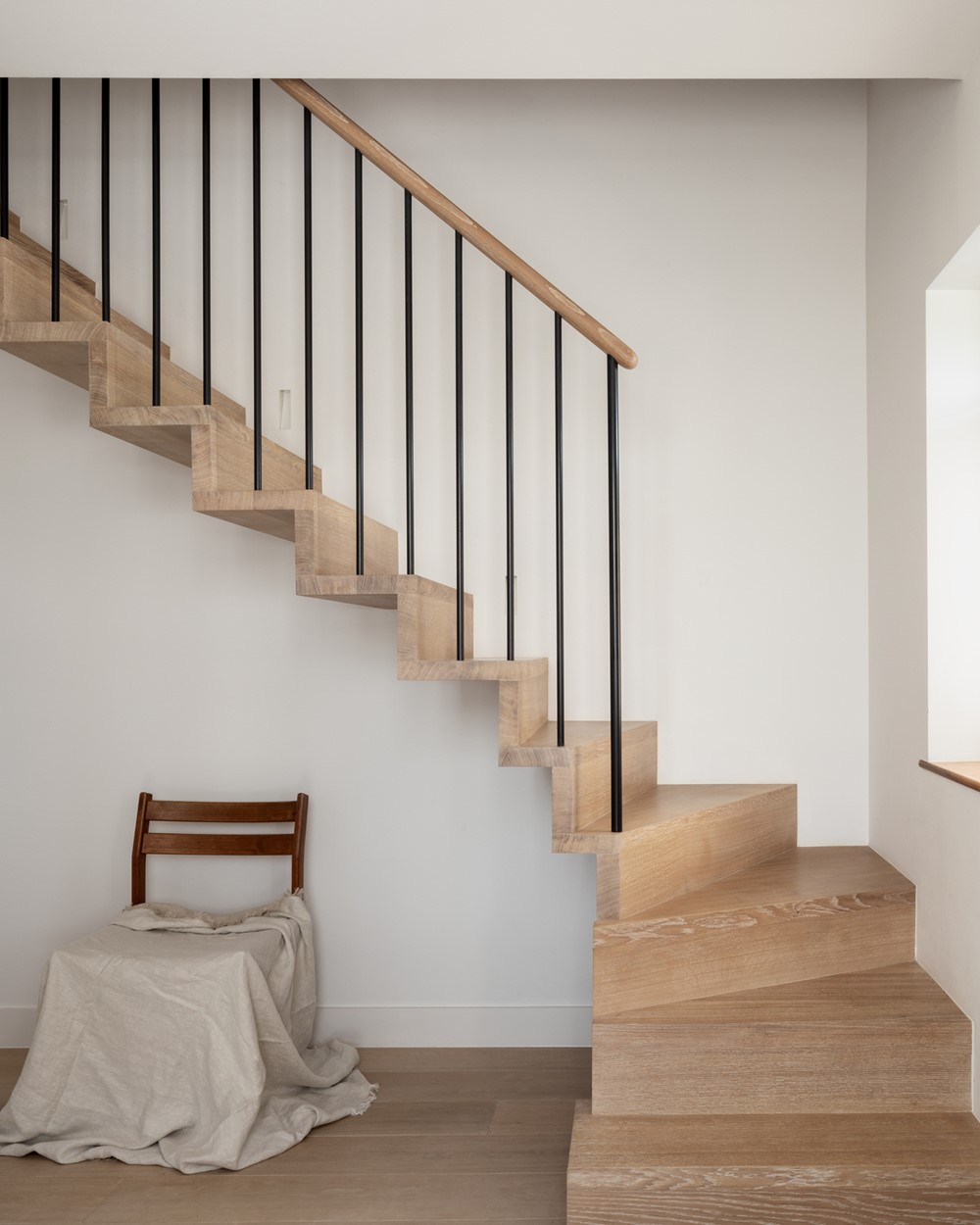
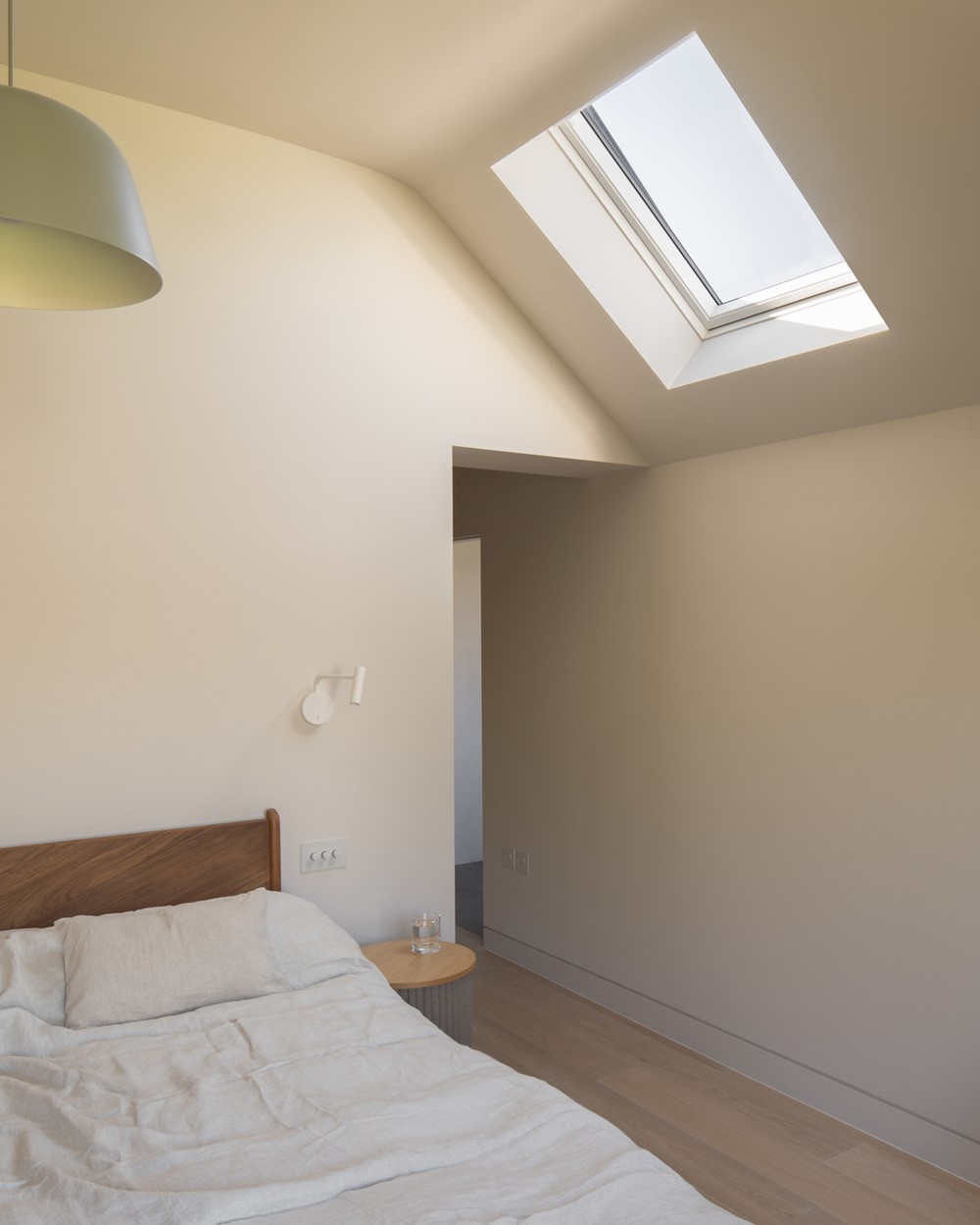
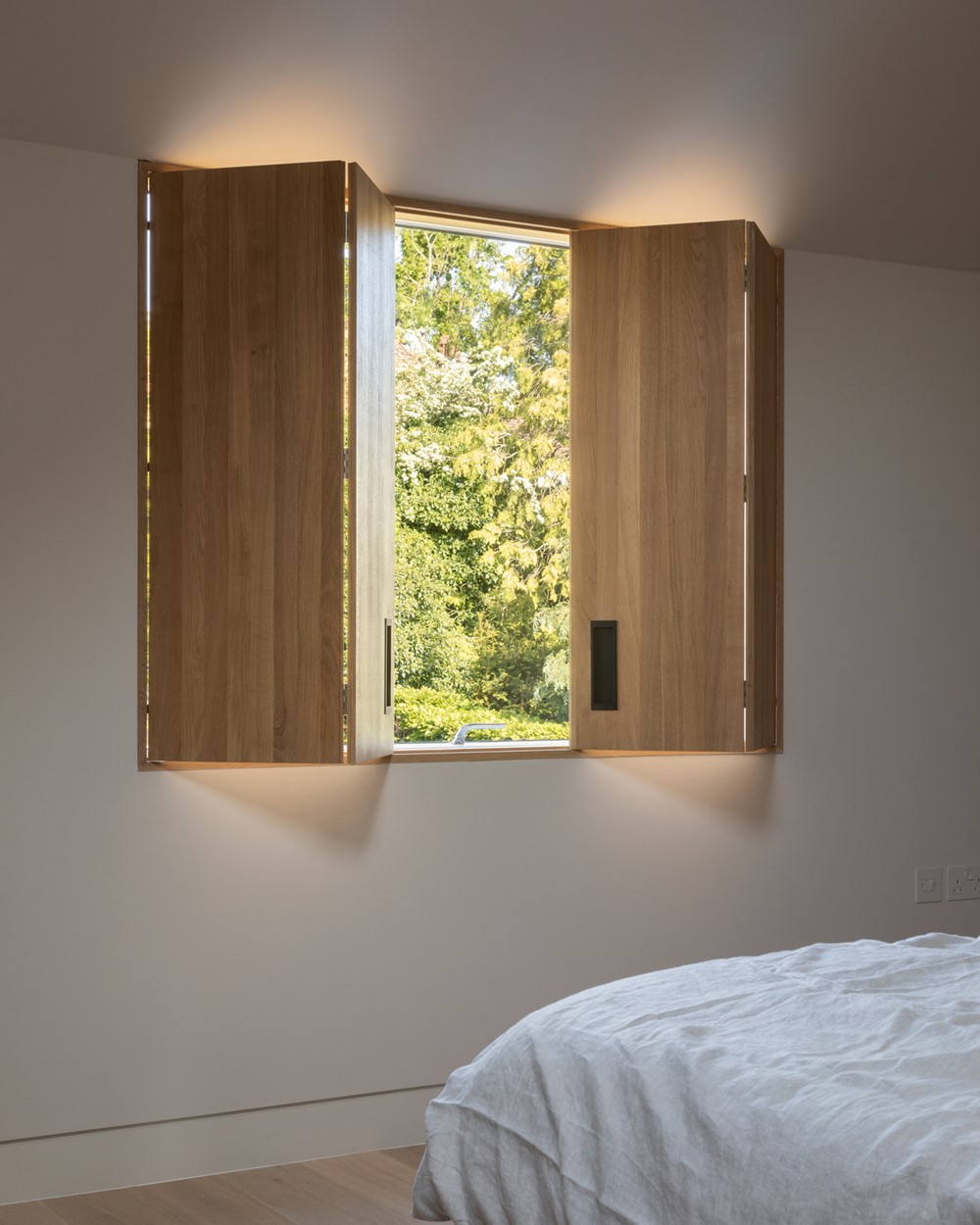
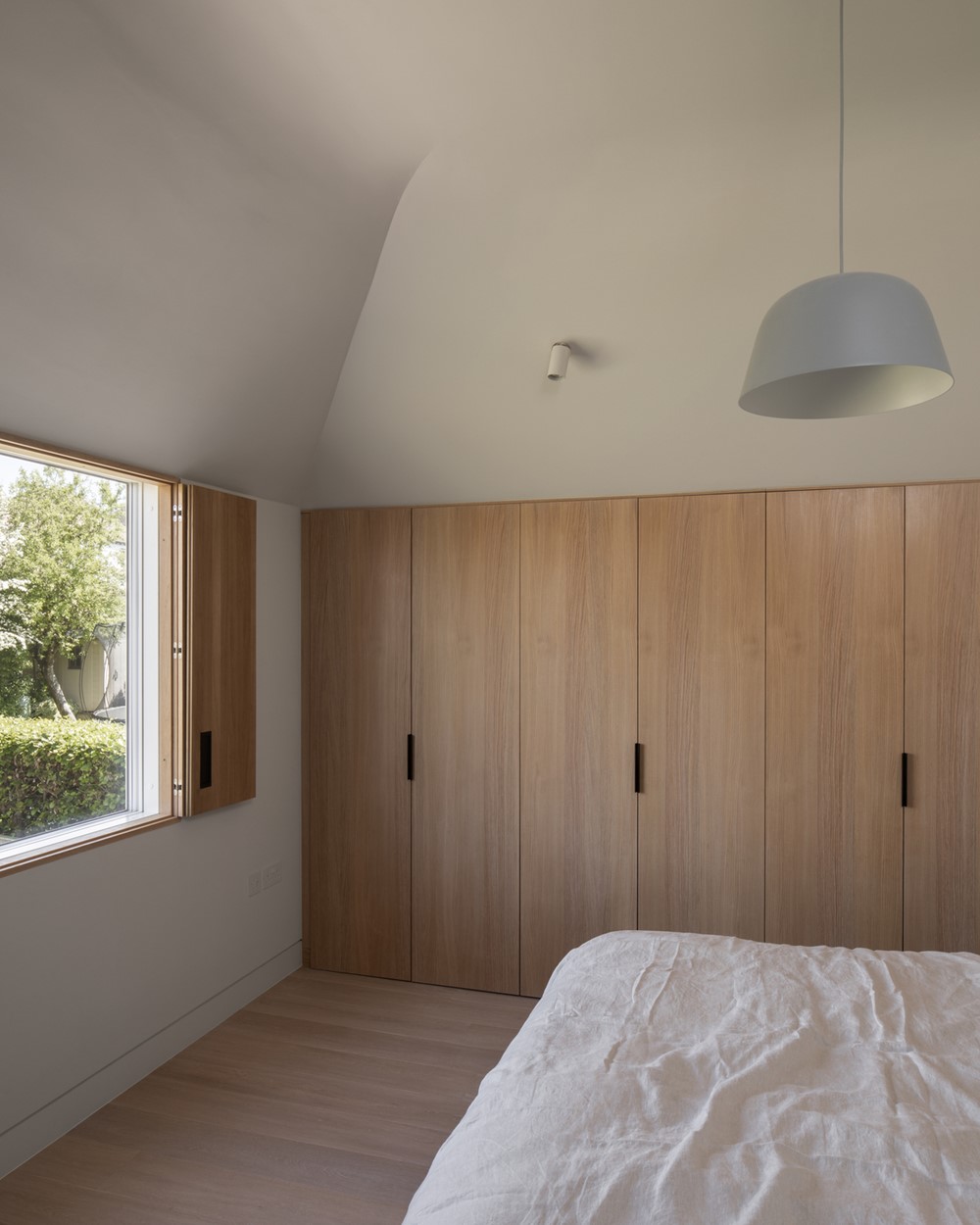
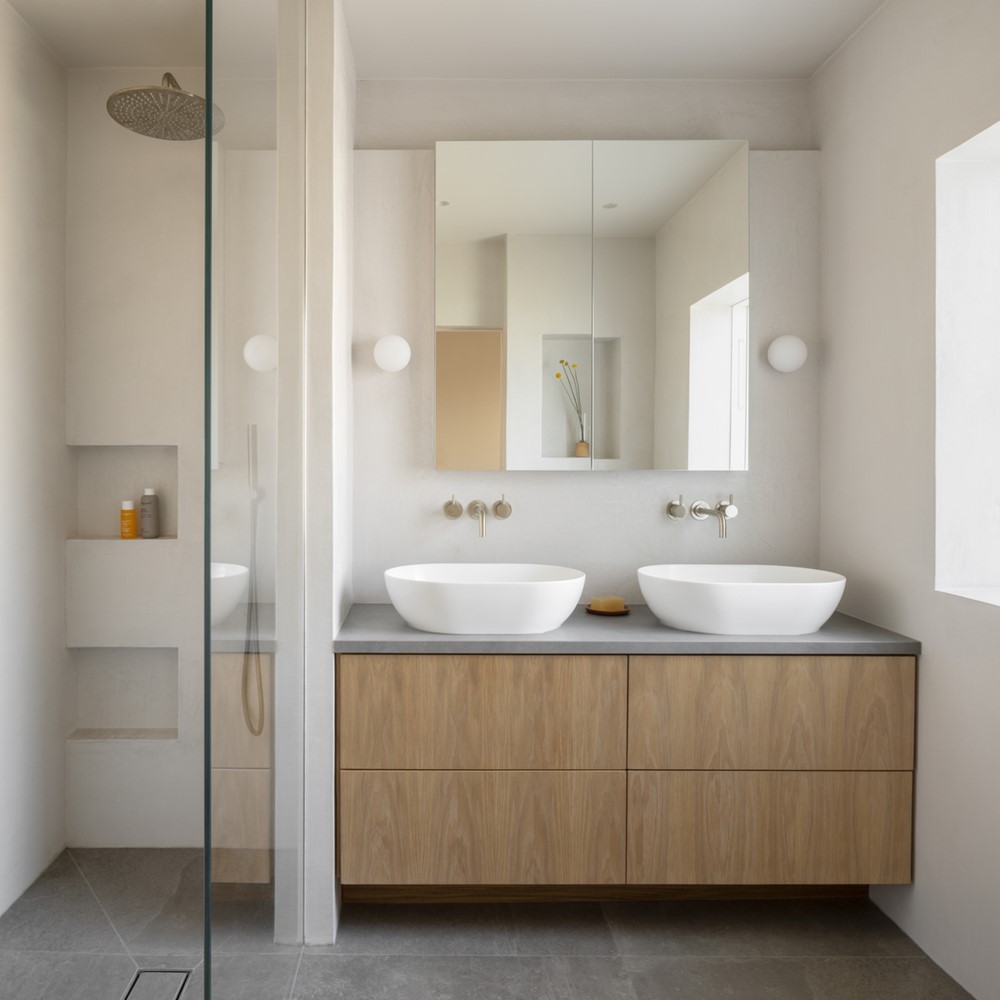
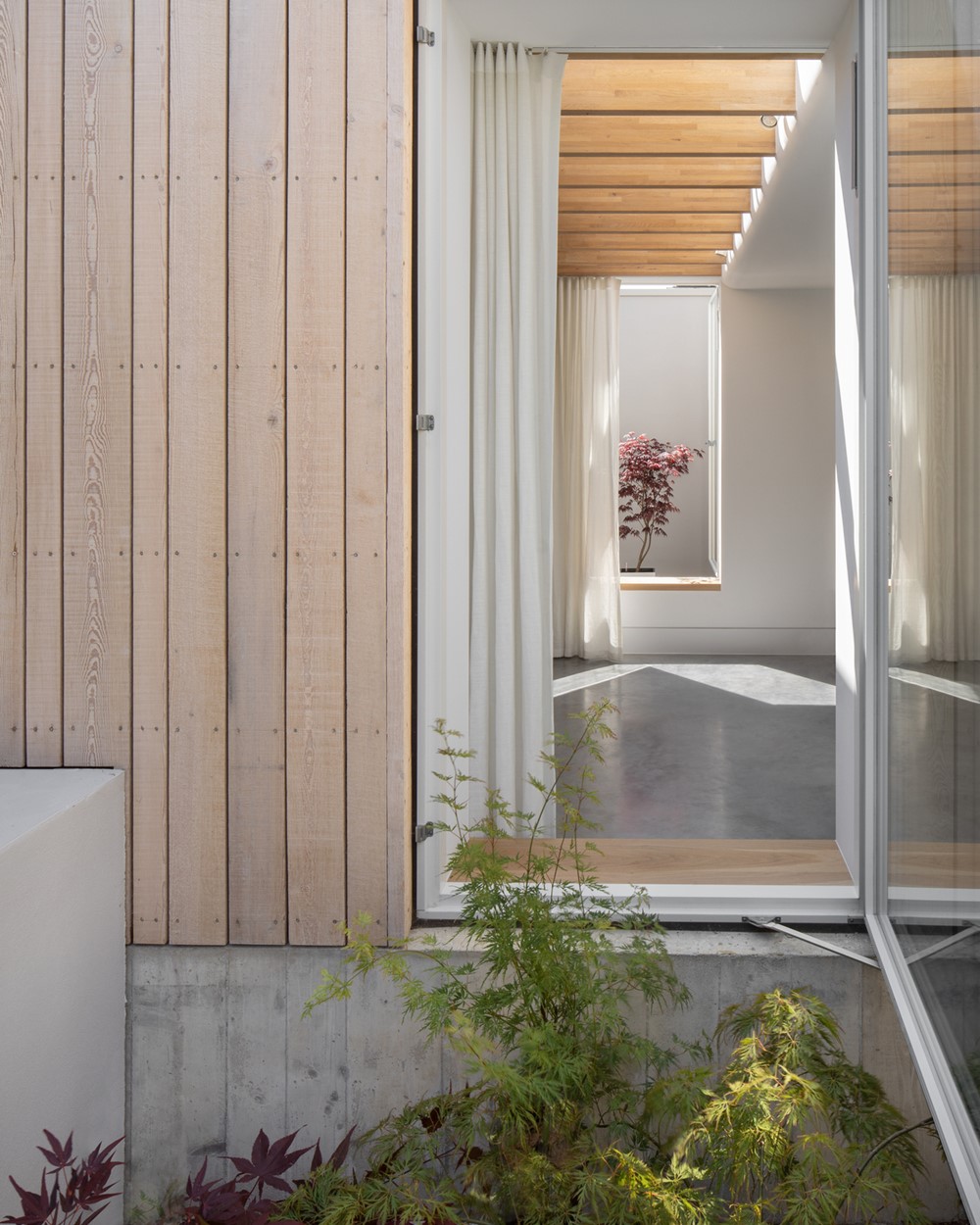
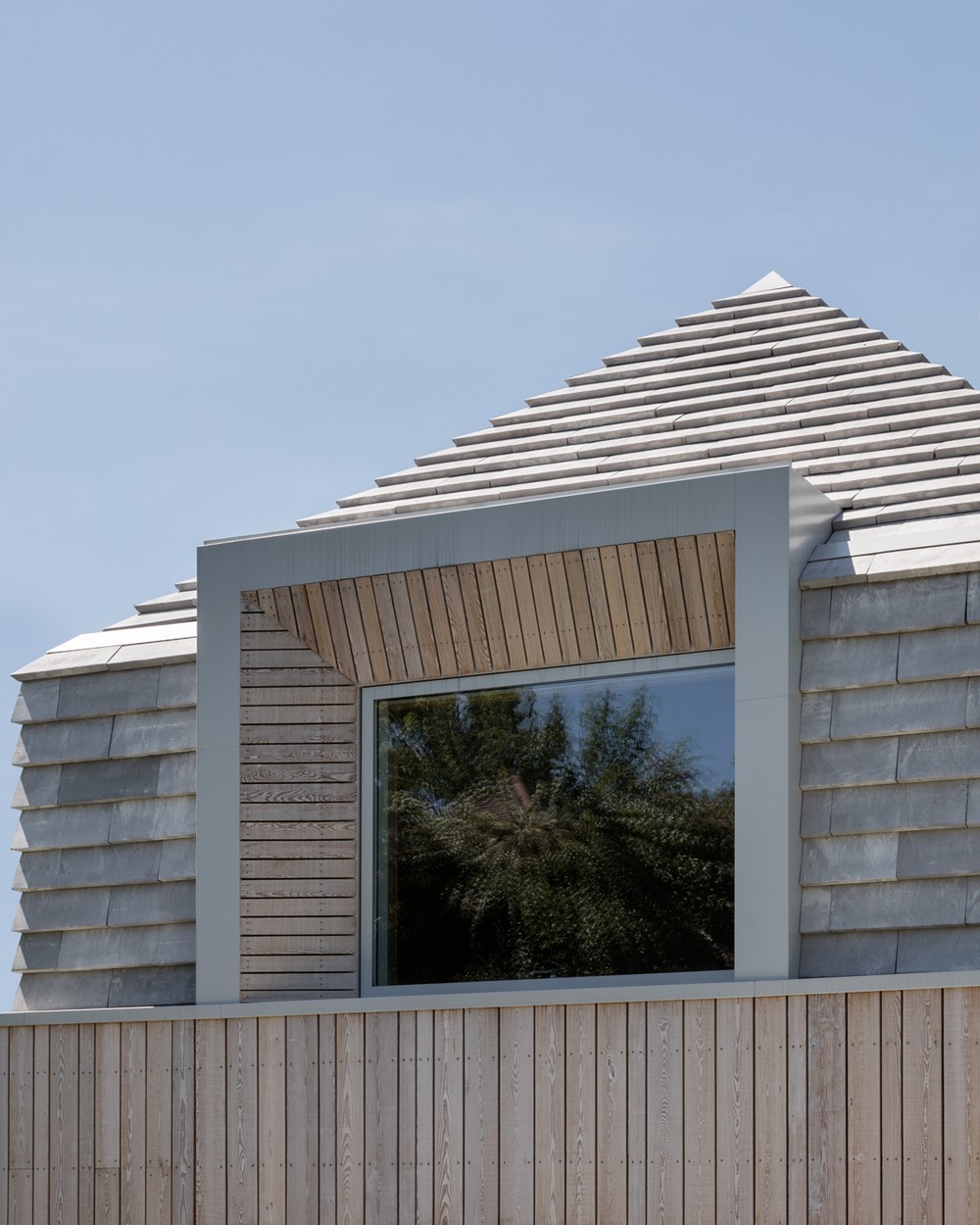
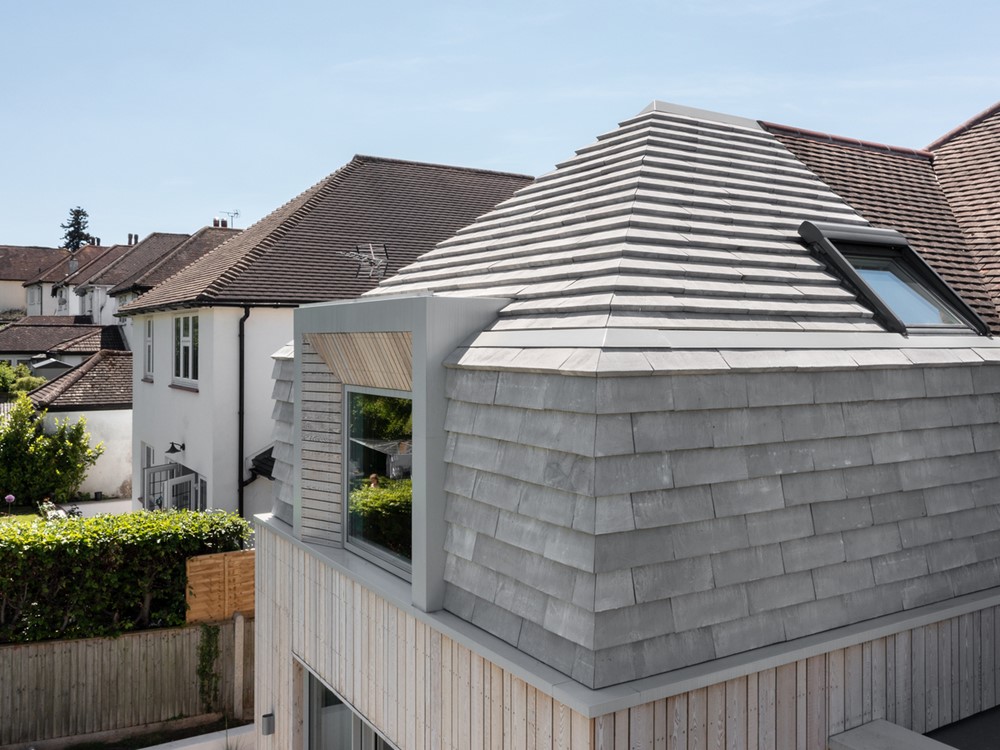
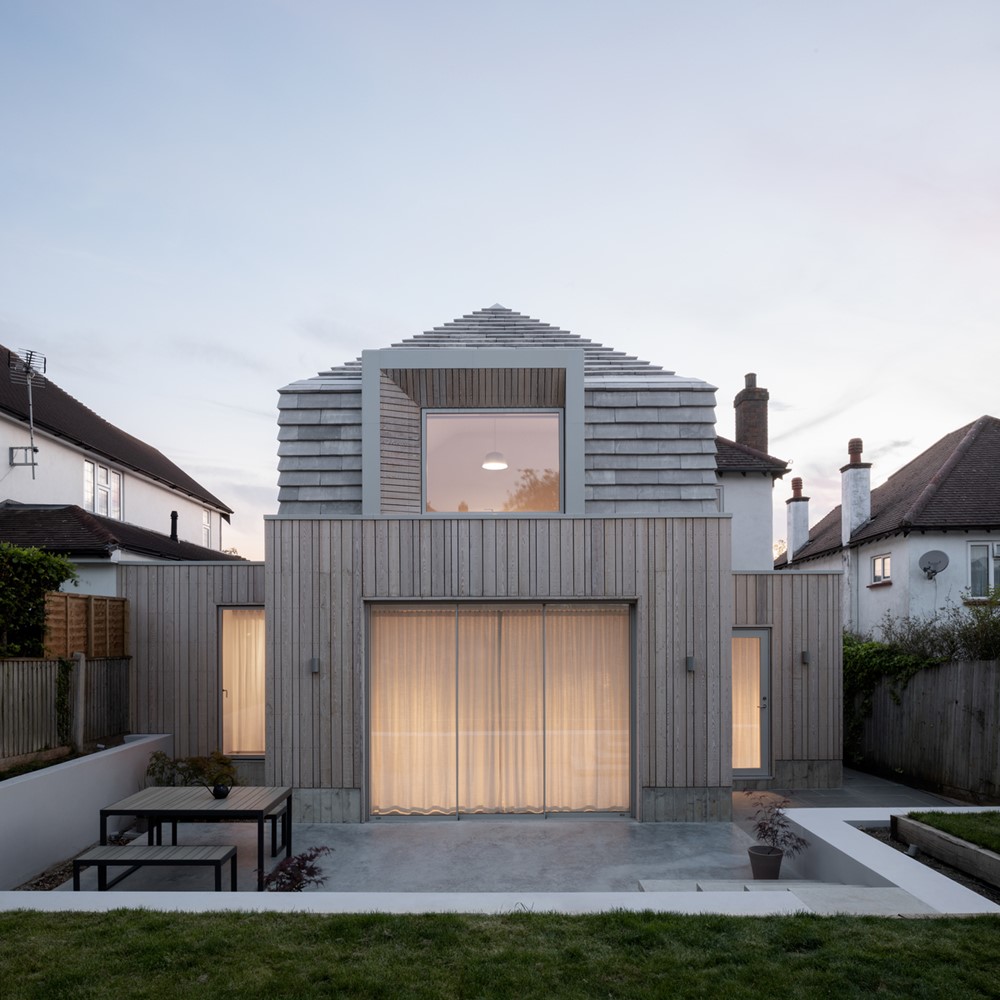
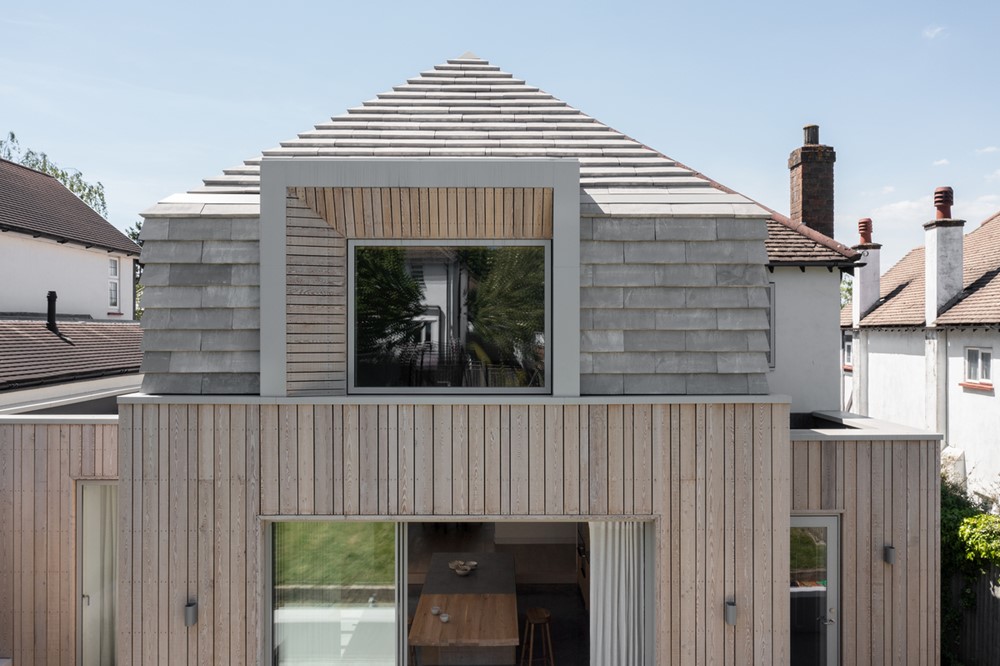
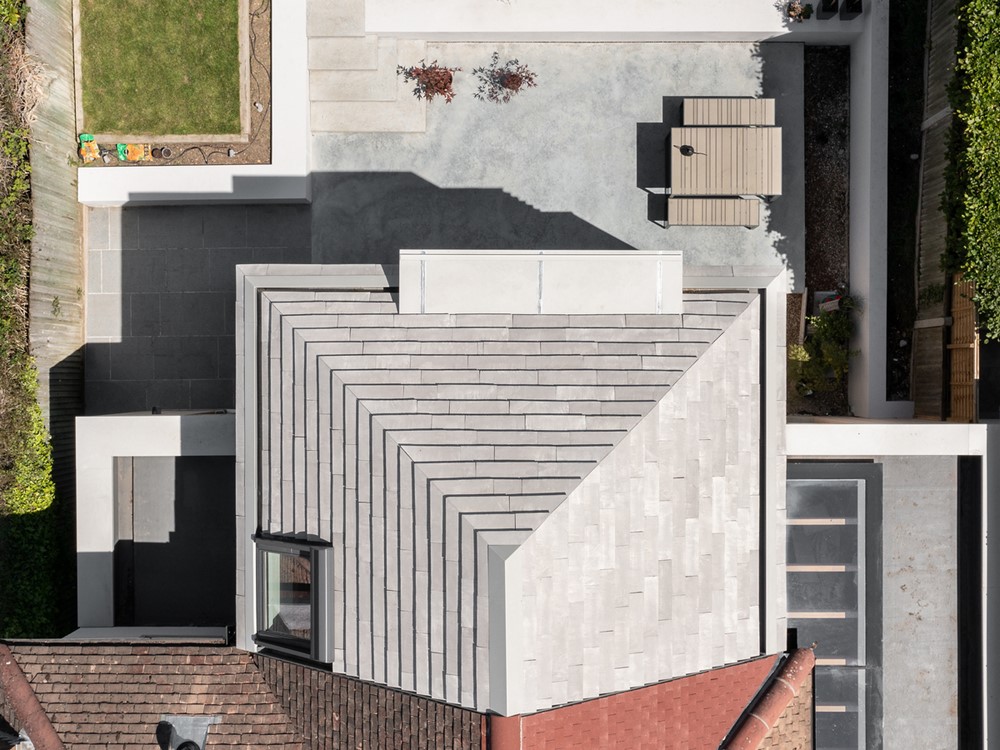
The clients, a couple with two young children, briefed the architects to redesign the home to include more spacious and open living areas in which they could spend quality time together. Despite contending with strict planning conditions at their Epsom estate, the clients asked Oliver Leech Architects to create a new modern identity to visually set the house apart from its neighbouring rear additions. The new extension accommodates a new master bedroom and bathroom suite on the first floor featuring vaulted ceilings and garden views. On the ground floor, the house has been opened up to allow for a large, flexible kitchen and living space with views and connections to the internal courtyard and large rear garden.
The form of the extension was defined by the existing house. Oliver Leech Architects designed a hipped form that mimics the original roofscape, featuring a large dormer window that punctuates the roofline. Planning restrictions meant that the external material palette was limited to what was previously on site, including dark clay tiles, timber, and render. The architects worked within these constraints to design a contemporary palette that gives the house it’s own sense of identity, using a handmade, grey Danish clay tile that is visually very different to the neighbouring red tiles more commonly seen on traditional Surrey roofscapes.
Considerable time was spent on sourcing bespoke tiles and finding an aesthetically pleasing way to cut and lay them. Various styles in a wide range of colours from across Europe were tested on site to achieve harmony with the original house. This is one of the first projects in the UK to use Petersen tiles; the chosen warm grey clay colour comes from earth pits in Eastern Europe, before they are transported to Denmark to be handcrafted into wide brick-format hung tiles. Beneath the clay tile roof a layer of corrugated roofing material acts as a water management system, allowing rainwater to flow off into a hidden gutter.
Complementing the soft, muted tone of the tile, the timber cladding also adds textural interest and displays the architect’s intricate detailing. The Siberian Larch is imbued with oil to naturally weather the timber to a silvery grey and is laid in an alternating pattern in terms of timber widths to give a playful appearance to the façade and offset the sharp lines of the hipped roof and dormer. The same timber was used as shuttering to cast the concrete plinth at the base of the extension, repeating the pattern and re-creating the grain that is now fossilised into the concrete.
